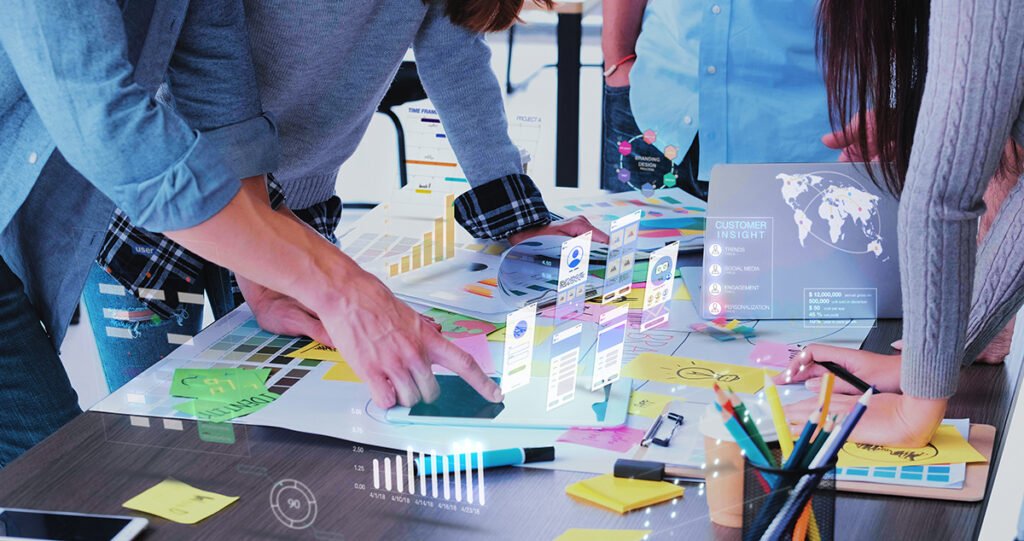If someone asked me what ‘digital design’ was, I would have to delve into the subject and come back to them as it is a term that has several layers of complexity, and one that would require a detailed explanation to truly impart its meaning. If you look up ‘digital design’ in Australia’s Macquarie Dictionary Eighth Edition you will find everything from ‘digital archaeology’ to ‘digital immigrant’, but not ‘digital design’.


Did you know there are 9 different listed meanings of the word ‘digital’? In the context of digital design, it makes sense to gravitate towards the meaning of ‘involving or relating to the use of computer technology’. For the word ‘design’ there are 18 different meanings! Again, in the context of digital design a relevant meaning of design from the list would be ‘to prepare the preliminary sketch or the plans for a work to be executed.’
Some market commentators suggest that there is a distinction to be made between graphic design and digital design. In the current world of graphic design these boundaries seem to be very much blurred, particularly with the advent of COVID seeing an acceleration of businesses building and enhancing their digital presence, and the fast-paced development of new software transforming the way we deliver and receive services.
According to the University of South Australia, digital design is focussed on the space where interaction between online users and everyday products and services occurs. Digital design incorporates some key elements including responsiveness, usability, user experience (referred to as UX), and user interface (referred to as UI) design.
Southern New Hampshire University points out that the term ‘digital design’ is often used as an umbrella term to describe several different types of design work including UX/UI design, graphic design, and web design. In simple terms digital design includes deliverables that you would find on the web and other digital platforms.


Digital design incorporates several different types of roles. For example, the role of a web designer is to create functional and aesthetically pleasing mobile apps, websites, and products. UX/UI designers focus on creating layouts and coding web pages. A User Interface Designer works specifically on making the digital interfaces enjoyable and easy-to-use. User Experience Designers work to ensure that users have the best possible experience throughout their whole journey using a product, app, or website.
Deliverables that digital designers create, and that exist on digital platforms like websites or applications, can range from PDF graphics for reports, website graphics and layouts, interactive elements such as buttons, to infographics and digital advertising. One distinguishing feature of digital design is that its success can be measured via analytics. Digital designers can see how many views their design is receiving through engagement (via likes and comments) and number of page views. Analytics also provide the opportunity to test out variations of a design to monitor how successful each version is. This is particularly useful for companies that are using digital designs for advertising or selling a product or service.
If you are interested in using digital design as one of your company strategies, then get in touch with us at Fresco Creative.
